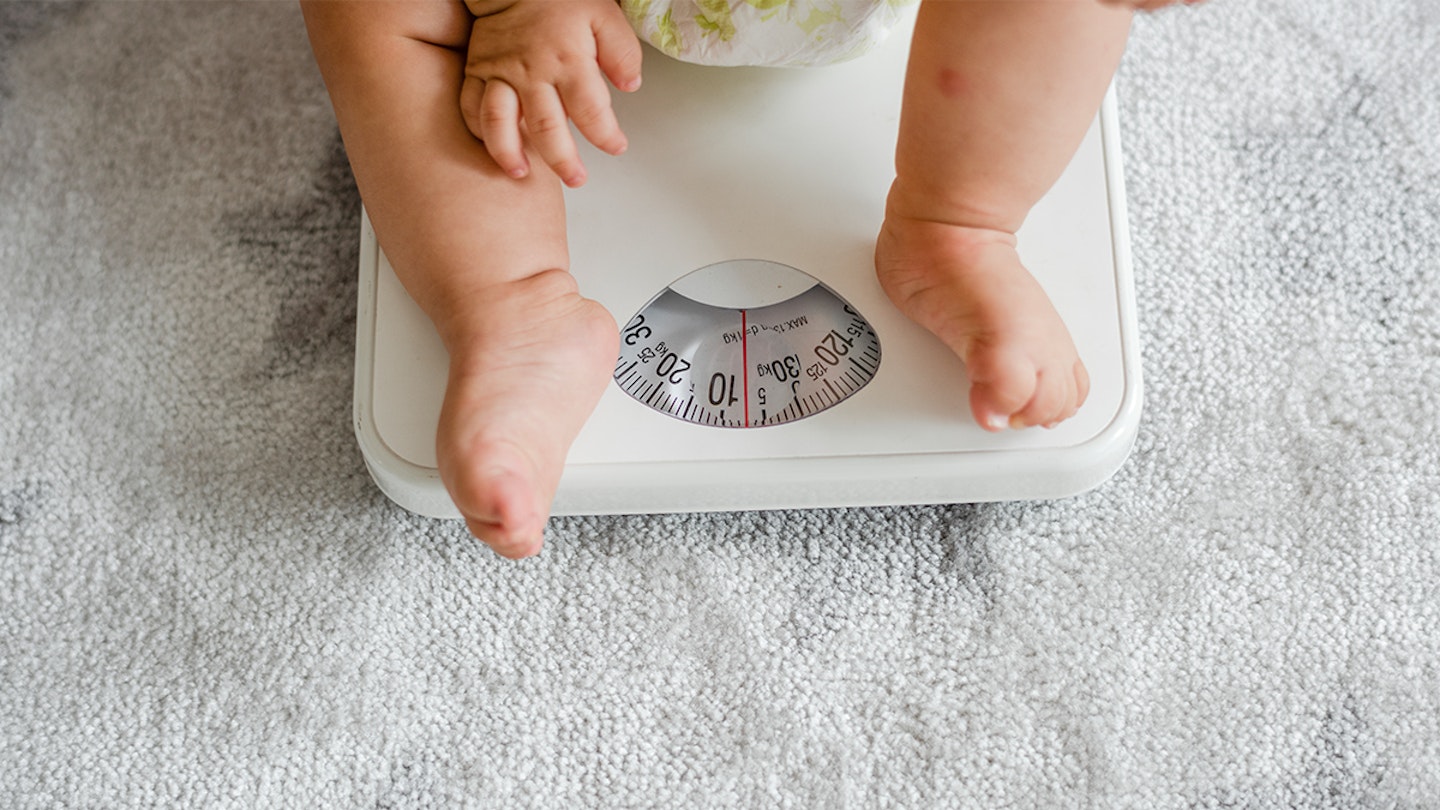If you've recently had a baby, you'll know how obsessed you've become with your baby's weight. Steady weight gain is a sign that your baby is healthy and feeding well, so it's understandable why it's very important to keep track of on your baby weight chart UK to make sure baby's month by month development is heading in the right direction.
While it's normal for your baby to lose a little weight in the first few days after birth, they should be at or above their birthweight by the two week mark.
Your midwife or health visitor will support you through this time and discuss how feeding is going for you. They may also ask to observe you when feeding to make sure baby is latching okay.
If you're worried about your baby's growth or notice they're experiencing baby growth spurts, we've put together everything you need to know about their baby weight chart and how to read it, weighing your baby and tracking their height with expert advice from Midwife Pip.
How to read and interpret your baby's weight chart
Your Midwife, Health Visitor or GP will use baby growth and weight charts, known as ‘centile charts’ found in your Personal Child Health Record Book (the Red Book given to you after you have your baby).
During the first two years, the weight section is used to assess how your baby is growing compared to other children of the same age and gender. As your child gets older the height section is also used.
Boys and girls have different charts as boys tend to be a little heavier and taller than girls, so their chart will vary. There will also be a difference if your baby is premature until two weeks after their original due date when you'll get the standard growth charts.
The Royal College of Paediatrics and Child Health have shared some examples of growth charts. We've popped them below for you to look at or download.
Whilst every baby’s growth is unique it is expected that your baby will continue to grow based on their centiles which means when looking at the chart, they will follow the same line or go up to a bigger centile. The centile lines are the curved lines you can see on the chart.
The centiles are marked 25th, 50th, 75th etc. this means if you baby is on the 75th that 25% of babies of the same gender and age are larger and 75% are smaller. Of course, this number alone does not provide a complete picture of your baby’s health and wellbeing it is a useful screening tool, and your health care provider will let you know if any other monitoring is recommended.
When it comes to their weight, you will find your baby gains the most weight in their first 6-9 months. As they get older and develop into their toddler years, their weight gain will slow down as they become more active. It's also to note that if baby gets ill, their weight gain may also slow down but should return back to normal in a few weeks.
This chart should also help give you a good idea of how tall your baby will be when they're an adult. By using the adult height predictor in your baby's red book and their measurements at the age of two, you should also be able predict your baby's future height. By this age, you should also be able to track your baby's BMI to see if baby is underweight or overweight.
How is baby measured and weighed?

"Your baby will be weighed wearing just their nappy using your health care practitioners’ scales which have been calibrated for accuracy."
While there's no need to invest in baby scales for your home, you might want a pair of your own if you're keen to keep track of baby's weight gain.
When will baby be measured?
"Time scales will vary for each baby based on their unique circumstance, but all babies will be weighed at birth and then usually on Days 3, 5 and 10 after birth this gives you a good idea of how feeding is going in the early days."
When to worry about growth
"It is normal for babies to lose some weight in the first few days or week (up to around 10%) as they are exerting energy on the outside that they weren’t when they were in the womb. Additional feeding support may be recommended if your baby loses more than the expected amount in these early days. If your baby changes centiles drastically your doctor may advise some further investigations."
Midwife Pip has answered some of the common questions parents can have around baby weight charts:
Baby weight chart FAQs
Will breastfed babies grow at a different rate to formula fed babies?
"It is typical for breastfed babies to gain weight slower than formula fed babies although this will not be the case for all infants."
What if my baby is overweight?
"The growth charts are simply a guide and your health care practitioner will be monitoring your baby’s wellbeing and milestone development alongside weight. Baby’s having lots of rolls and fat stores is very normal and healthy. Baby’s are typically not classified as ‘overweight’ but some will appear much larger than others."
Expert written
This article contains expert advice from Midwife Pip, an experienced, practicing Midwifery Sister, MSc graduate, founder of Midwife Pip Podcast, Hypnobirthing and Antenatal Educator, co- author of published research and importantly a mum.
